Monthly Cell Challenge #3 / 2025
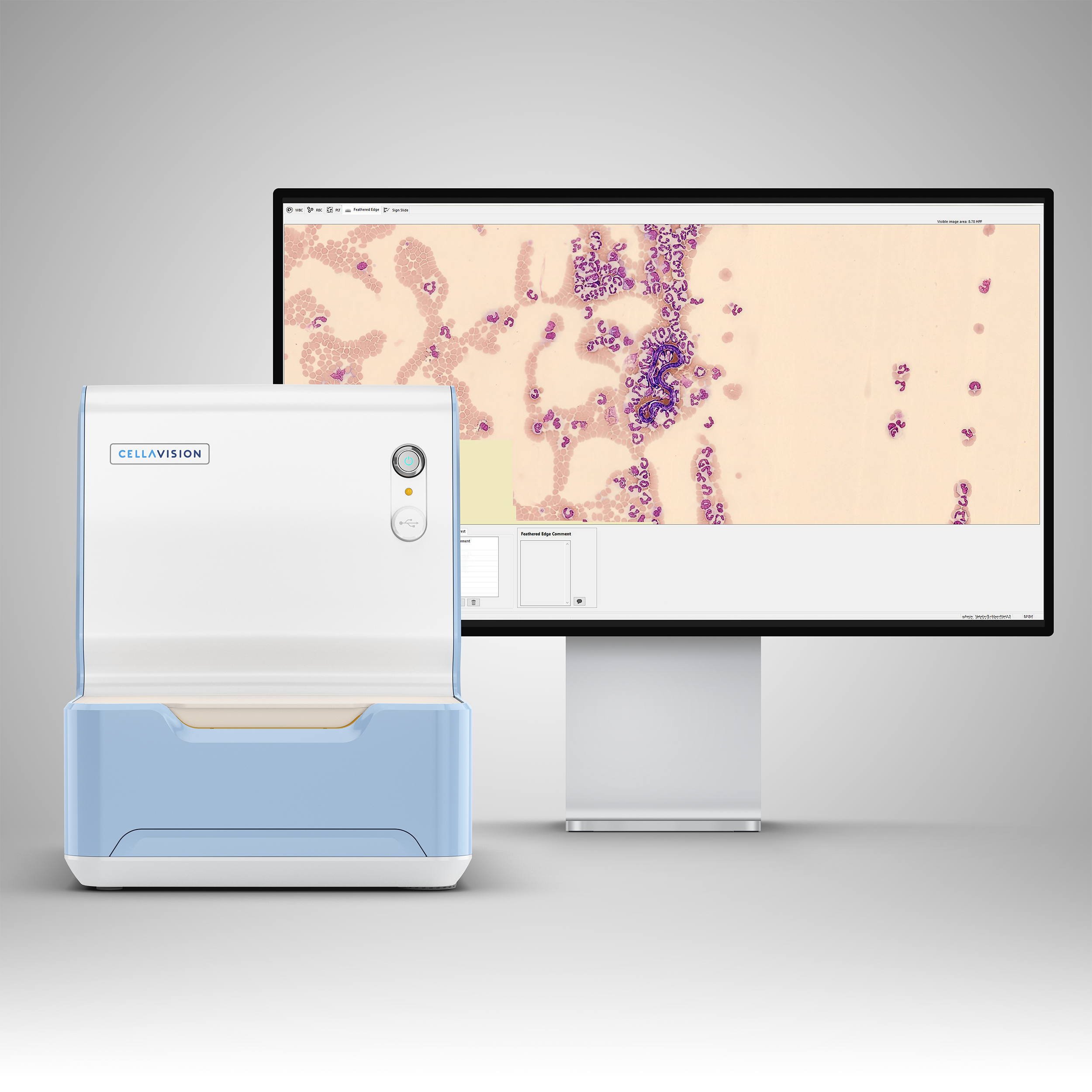
Furry friend with a cough
Description:
A 6-year-old dog, adopted from a shelter in Spain, arrives with its owner to their local veterinarian in Germany because of fatigue, weight-loss, and coughing. The veterinarian notices abnormal lung and heart sounds and decides to order among other analyses, a CBC and differential.
CBC results:
| Test | Result | Units |
|---|---|---|
| WBC | 14,3 | x109/L |
| Hematocrit | 42,3 | % |
| MCV | 62,7 | fL |
| PLT | 308 | x109/L |
Smear analysis on CellaVision® DC-1Vet:
| WBC Differential | % | x109/L |
|---|---|---|
| Band neutrophils | 2 | 0,3 |
| Neutrophils | 75 | 10,7 |
| Eosinophils | 2 | 0,3 |
| Lymphocytes | 12 | 1,7 |
| Monocytes | 9 | 1,3 |
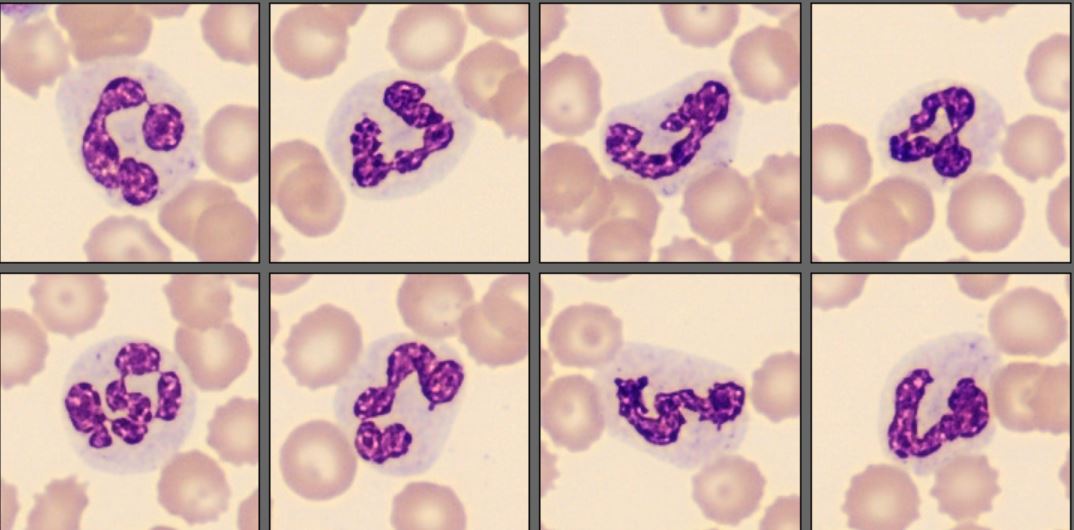
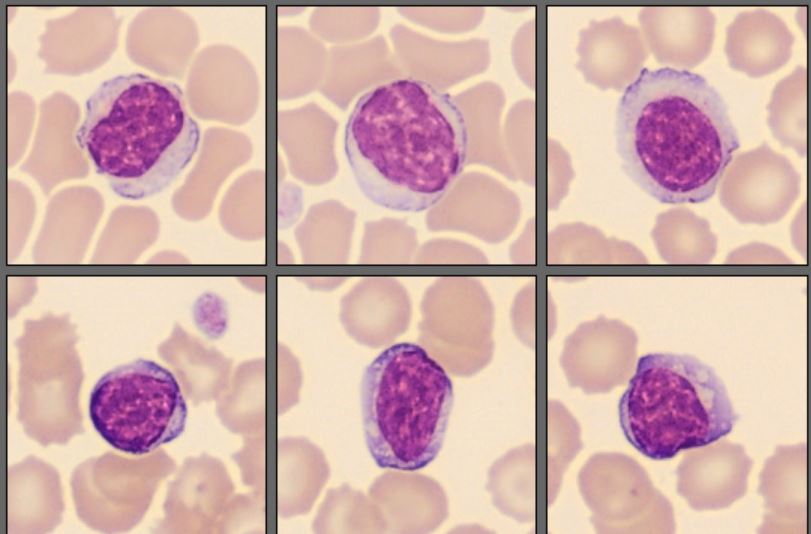
Nothing abnormal is seen in the WBC differential, but the lab technician discovers something unusual in the Feathered Edge scan in the CellaVision® DC-1Vet Reviewer.
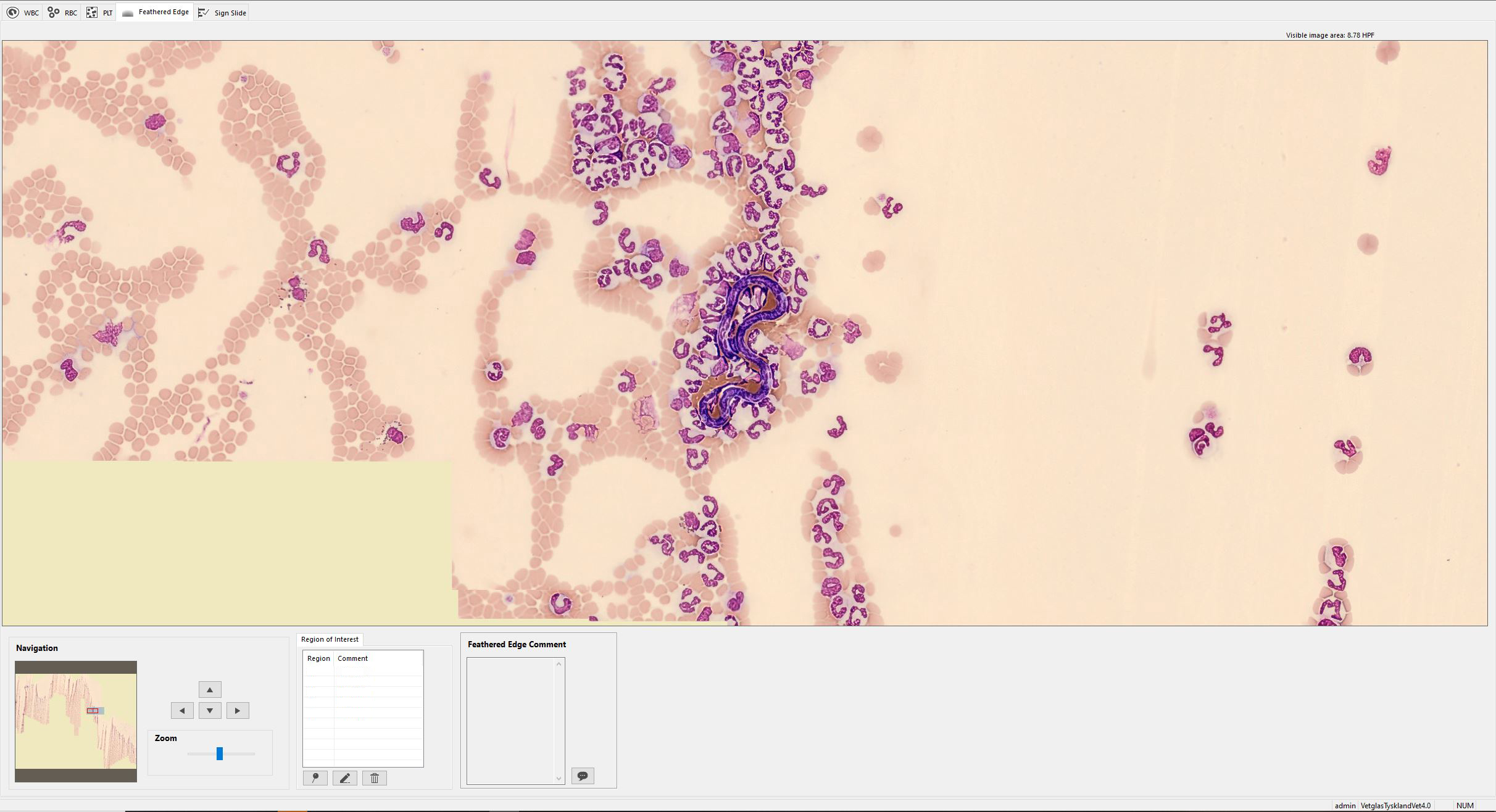
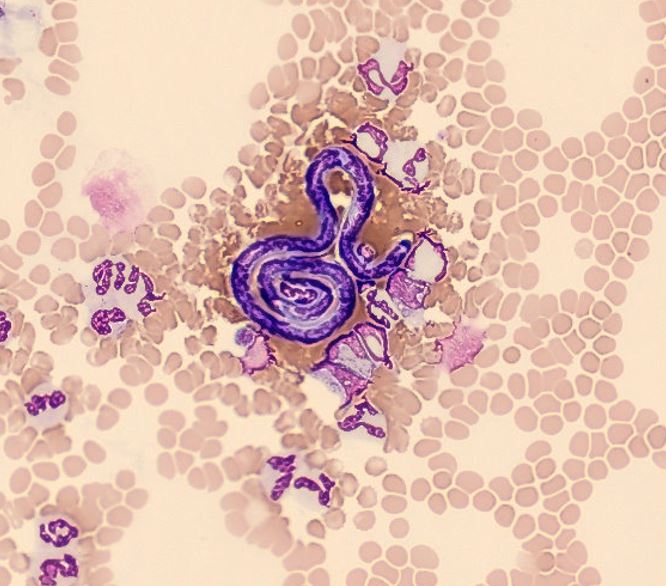
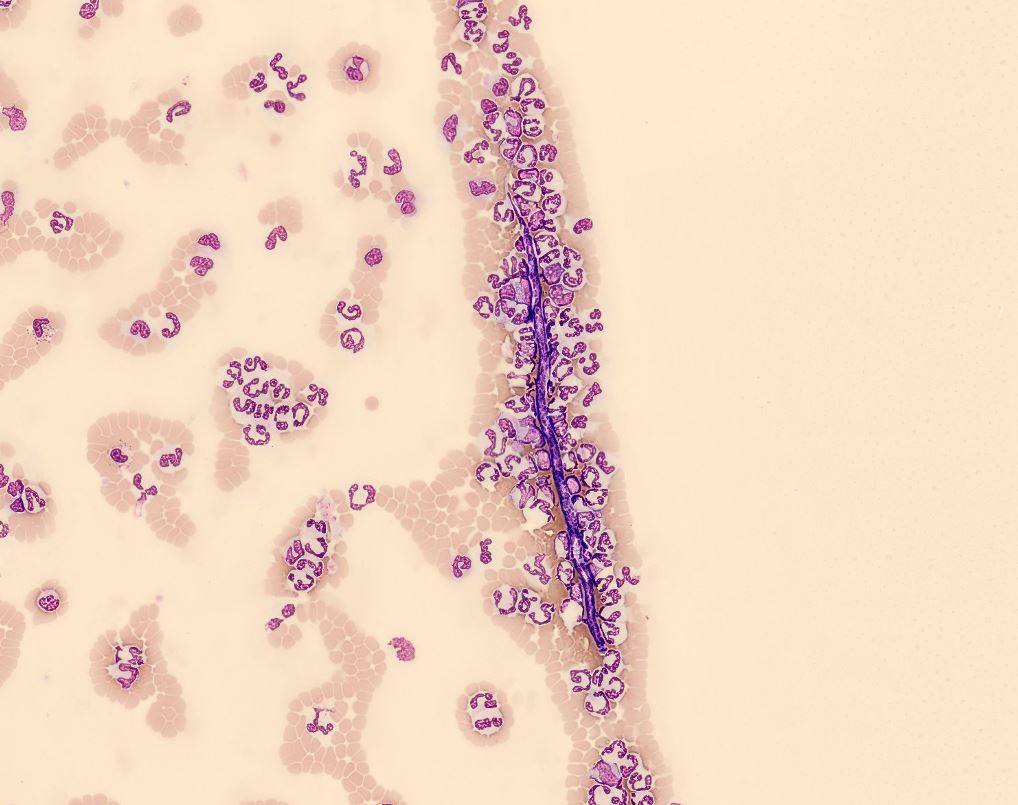
Diagnosis:
An antigen test was performed, and the dog was diagnosed with Dirofilaria immitis (Heart worm).
Discussion:
Dirofilaria immitis is primarily a parasite of dogs and wild canids but can also occur in cats and other carnivores. The parasite is dependent on mosquitoes, the climate, and the presence of a reservoir animal. It typically requires temperatures over 10 °C (50 °F). Spain is one of several endemic regions for heart worm.
Heartworms have a complicated life cycle. The parasite requires the mosquito as an intermediate host before it can complete its life cycle in the dog. There are as many as 30 species of mosquitoes that can transmit heartworms.
The adult D. immitis live in the pulmonary artery and right ventricle and produce microfilaria, which is the first-stage larvae. These microfilariae are released in the blood and can then be ingested by a mosquito intermediate host when the infected dog is bitten. In the mosquito, the parasite can develop to third-stage larvae at a temperature dependent rate. Dogs can then get infected with third-stage larvae when the mosquito feeds again. It takes at least six months from infection for adult nematodes to mature and start producing microfilaria, although immature adults can cause problems 3–4 months after infection.
The severity of clinical symptoms depends on the adult heartworm burden and the general health status of the dog. Clinical signs could be compromised pulmonary circulation, coughing, anorexia, and weight loss, among other symptoms. In severe heartworm disease, hepatomegaly and syncope may occur, and in some cases this can be fatal.
Morphologically, the adult heart worm is a cylindrical, slender white worm. It has a cuticle with three main outer layers made of collagen and other compounds. The outer layers are non-cellular and are secreted by the epidermis.
The microfilariae, which is the worm we find in the blood film, are about 300-325 μm in length and 6.7–7.1 μm in width. They have a tapered anterior end and a long, thin, pointed tail (sometimes in the shape of a button hook).
Heartworm prophylaxis should be used in dogs that live in or travel to heartworm endemic regions during the mosquito active season.
When treating a dog with heart worm infection, it requires an injectable drug called melarsomine. Melarsomine will kill the adult heartworms in the heart and adjacent vessels.
Many dogs will also be treated with an antibiotic (doxycycline) as prevention for potential infection with bacteria (Wolbachia) that often inhabit the heartworm.
When treatment starts, the adult worms die in a few days and start to decompose. The dead parasites break up and will be carried to the small vessels in the lungs. They will eventually be reabsorbed by the body. This resorption can take several weeks or months and can cause severe complications with pulmonary thromboembolism. Therefore, it is essential that the dog is kept as calm as possible and should not be allowed to exercise for at least one month following the final injection of the heartworm treatment.
There have been reports of human infections with D. immitis in several of the countries in which the parasite occurs in dogs. When humans are infected, the parasite does not complete its maturation, but it can cause small “coin” lesions in the lung, and these may be symptomatic.
References:
https://wcvm.usask.ca/learnaboutparasites/parasites/dirofilaria-immitis.php Accessed 20-02-2025
https://vcahospitals.com/know-your-pet/heartworm-disease-in-dogs# Accessed 20-02-2025